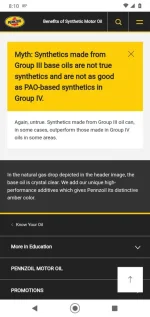OVERKILL
$100 Site Donor 2021
My recollection is that the first version of the product wasn't properly balanced enough and indeed had some negative interactions with seals. They fixed that with POE.I thought it always contained poe? I recently read the popular science article on synthetic oils from april 1976 and the mobil engineers did state they used poe to balance out pao being hard on seals. Not that it matters as that was so long ago. Just curious
That said, it may have always contained POE, but perhaps not enough initially?
Last edited:


